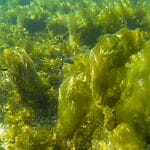Dive into the twilight zone, a mysterious part of the ocean 200 to 1000 meters below the surface, inhabited by fascinating creatures like lanternfish, jellies, and squid. These animals have unique adaptations to thrive in extreme conditions, playing a vital role in the ocean’s carbon cycle and food chain.
Discover their bioluminescent abilities, complex behaviors, and the challenges they face in this dimly lit world.
Key Takeaways:
- The twilight zone of the ocean, between 200 to 1000 meters below the surface, is home to various unique and abundant species such as lanternfish, jellies, squid, shrimp, and small crustaceans, each with specialized adaptations to thrive in this extreme environment.
- Bioluminescence is a common trait in twilight zone animals, serving various functions including attracting prey, communication, camouflage, and counter-illumination. This phenomenon plays a significant role in the daily vertical migrations of these creatures, contributing to the ocean’s carbon cycle and supporting life across multiple trophic levels.
- Deep-sea sharks are apex predators in the twilight zone, employing specialized hunting strategies, adaptations, and migratory behaviors to optimize foraging success. Their role as top predators is crucial in regulating mesopelagic food webs.
- The twilight zone hosts a myriad of tiny crustaceans, which, despite their small size, significantly contribute to the food chain and ecosystem balance by grazing on organic particles, transporting nutrients, and serving as important prey for larger animals.
- Many twilight zone animals exhibit unique reproductive strategies, such as swarming behaviors and specialized egg sacs, to adapt to the challenging midwater environment and ensure population stability. Rapid reproductive cycles and high abundance make these creatures indispensable members of mesopelagic communities.
List of Animals in the Twilight Zone
The Twilight Zone hosts a variety of animals with unique adaptations. Lanternfish, jellies, squid, shrimp, crustaceans, sharks, hatchetfish, and giant squid are some of its inhabitants. These creatures use bioluminescence, camouflage, and vertical migration for survival, contributing significantly to ocean food chains and the carbon cycle.
| Species | Characteristics | Adaptations | Ecological Role |
| Lanternfish (Myctophids) | Key contributors to the ocean’s carbon cycle, vertical migration | Bioluminescence for attracting prey, schooling, camouflage, communication | Specialized hunting strategies, adaptations for Twilight zone |
| Jellies | Gelatinous invertebrates, translucent bodies | Resilient to pressure changes, specialized digestive and sensory systems, bioluminescent bacteria symbiosis | Regulate zooplankton populations, contribute to vertical carbon transport |
| Squid | Range from tiny bobtail squids to colossal giants | Dynamic skin color change for camouflage, bioluminescent lures | Predators in the twilight zone, complex reproductive strategies |
| Shrimp and Small Crustaceans | Various species with unique feeding strategies | Enlarged sensory and feeding organs, specialized appendages for survival | Significant contributors to food chain and ecosystem balance |
| Deep-Sea Sharks | Largest eyes in the animal kingdom, high-speed swimming | Slow metabolism, electroreceptive ampullae, bioluminescence | Apex predators, regulate mesopelagic food webs |
| Hatchetfish | Bioluminescent, hatchet-shaped | Counter-illumination camouflage, excellent vision | Feeding on small crustaceans, communication and mating |
| Giant Squid | Large size, powerful tentacles, and jet propulsion | Largest eyes in animal kingdom, high-speed swimming | Formidable predators, elusive lifestyle |
1. The Mysterious World of Myctophids (Lanternfish)

Lanternfish, also known as myctophids, are one of the most abundant groups of mesopelagic fish residing in Earth’s twilight zone about 200 to 1000 meters below the ocean’s surface. Their unique ability to produce bioluminescent light has earned them the name “lanternfish.” Lanternfish play a vital ecological role and have adapted specialized features to thrive in the midwater habitat.
Bioluminescence: Nature’s Light Show
The most distinctive feature of lanternfish is their ability to produce light or bioluminesce. They have special light-emitting organs called photophores dotting their underside. The arrangement and number of these species-specific photophores differ between lanternfish species. For example, the highfin dragonfish has rows of ventral abdominal photophores.
Lanternfish use bioluminescence for attracting prey, schooling, camouflage, and communication. Some species like the glittering lanternfish even have a bioluminescent “smoke screen” to confuse predators. So lanternfish bioluminescence is far more complex and multifunctional than a mere “nature’s light show”.
Vertical Migration: A Daily Journey
Lanternfish display an incredible behavior of undertaking vertical migrations every day – moving upwards at dusk to feed under the cover of darkness and descending to deeper depths at dawn. They follow this pattern to hunt for prey like copepods and euphausiids as well as to avoid predators.
Scientists have recorded lanternfish migrating a staggering 1 kilometer up and down daily. This vertical relocation also plays a key role in the ocean’s carbon cycle and transporting nutrients between different depth strata. Some predators like dolphins, seals, and fish time their feeding to coincide with the lanternfish’s migration in order to catch them.
So the daily movement of lanternfish between the ocean’s layers sustains life across multiple trophic levels.
2. Jellies of the Deep: Gelatinous Wonders
The dark midwater zone hosts a myriad collection of gelatinous invertebrates commonly known as jellies. These translucent creatures have evolved unique adaptations to withstand and thrive in cold, high-pressure, low-light habitats. The variety of jellies found here plays a vital role in deep-sea ecology.
Adaptations to the Deep
Jellies dominating the Twilight Zone include siphonophores, salps, and medusae. Their bodies are mostly made up of water enclosed in a gelatinous matrix that is resilient enough to withstand pressure changes during vertical migration. As many mesopelagic species depend on daily vertical movement to survive, this adaptability is crucial.
Jellies also have complex digestive systems to derive nutrition from limited food sources and specialized sensory systems to perceive cues despite low light. Some even have symbiotic bioluminescent bacteria to attract prey. So jellies are incredibly equipped to prosper in extreme marine environments.
Ecological Role and Importance
Jellies occupy multiple links in the deep-sea food chain. The predatory lion’s mane jelly and nomadic deep sea jelly feed on a variety of zooplanktons, thereby regulating their population.
While comb jellies themselves are dietary staples for marine species like the ocean sunfish and leatherback turtles. Jellies also play a part in vertical carbon transport through marine snow sedimentation during their mass movement.
Additionally, their ability to form blooms makes jellies key components in maintaining balance within their ecosystem. Thereby these alien-like drifters contribute immensely to sustaining ocean life.
3. Squid of the Twilight Zone: Masters of Camouflage

The dark midwater zone is home to a variety of squid species equipped with specialized adaptations to thrive in this extreme habitat. Ranging from tiny bobtail squids to colossal giants, these cephalopods are masters of camouflage and exhibit complex predatory behaviors.
Camouflage and Predation
Twilight zone squid possesses exceptional camouflage capabilities to conceal themselves from predators and ambush unsuspecting prey. They can dynamically change skin color, patterns, and texture by manipulating chromatophores and light-reflecting cells in their skin. Some species like the cockatoo squid even decorate themselves with mucus and debris.
Squid use different tactics including blanching, counter-illumination, and disruptive coloration to disappear against the downwelling light above and upwelling glow below. This helps them hunt successfully.
Reproduction and Life Cycle
Reproduction in deep water squid is challenging due to the sheer depth and pressure. After mating, females attach clusters of capsules, each containing up to 80 fertilized eggs, to the seafloor where they develop unattended. Newly hatched squid, called paralarvae, float upward to populate the twilight zone and face high mortality during this journey.
The survivors feed on zooplankton and grow into adults within 1-2 years for most species. Some squid even exhibit inverted sexual size dimorphism where females outgrow males. Understanding their variable life histories provides insights into their ecology and evolution.
4. Shrimp of the Deep: Tiny but Mighty
The twilight zone harbors an incredible diversity of shrimp species. Ranging from tiny glass shrimp to large humped rock shrimp, these small crustaceans are equipped with specialized features to survive in light-limited habitats. They play a vital ecological role in the mesopelagic zone.
Feeding Habits and Adaptations
Different twilight zone shrimp employ unique strategies to find food and evade predators in the dark midwaters. Some like the purple spot shrimp have bioluminescent searchlights to help discover planktonic prey. Others such as the red-striped shrimp consume marine snow sinking down the water column.
Their adaptations include enlarged sensory and feeding organs to detect sparse food and consume optimally. Specialized appendages covered with setae further aid their survival in extreme deep sea conditions.
Role in the Marine Ecosystem
Although diminutive in size, shrimp significantly contribute to the food chain in the twilight zone by grazing on organic particles and becoming nourishment for larger animals in return. They transport nutrients between shallow and deeper waters during daily vertical migrations which helps maintain ecosystem balance.
Additionally, shrimp are important prey for apex predators like tuna, whales, and giant squid that migrate to the twilight zone to feed. Thereby these tiny crustaceans facilitate energy transfer across multiple trophic links in the mesopelagic realm.
5. Small Drifting Crustaceans: The Unsung Heroes

The Twilight Zone houses a myriad collection of tiny crustaceans that play a monumental role in driving deep-sea ecology. Ranging from copepods to ostracods, these creatures have developed specialized adaptations to thrive in the challenging midwater environment as they drift through the oceans.
Feeding and Survival Strategies
Many crustaceans in the twilight zone belong to a group called zooplankton that feed on marine snow, fecal pellets and phytoplankton. Species like copepods have sensory antennas to detect food and some even create feeding currents to capture particles.
To aid their survival, twilight zone crustaceans have transparent or blue bodies to camouflage against predators hunting for silhouettes. Despite their small size, these adaptations allow them to successfully feast and evade predators in the dim habitat.
Reproductive Behaviors and Lifecycle
Drifting crustaceans employ unique reproductive strategies tailored to their habitats. Many demonstrate swarming behaviors to increase their chances of finding mates. Females then produce eggs secured in sacs that float upwards where juveniles continue developmental stages as part of the plankton.
Mortality is high during the early life phases. However, survivors that reach maturity within weeks to months contribute to population stability. Their rapid reproductive cycles and sheer abundance make these tiny crustaceans indispensable members of mesopelagic communities.
6. Deep-Sea Sharks: Apex Predators of the Twilight Zone
The dark midwater zone hosts several species of sharks that have adapted to become apex predators of the deep. Ranging from bioluminescent lantern sharks to ancient goblin sharks, these elasmobranchs employ highly specialized hunting strategies to capture prey in light-limited habitats. Their role as top predators is crucial in regulating mesopelagic food webs.
Hunting Tactics and Adaptations
Unique adaptations allow deep-sea sharks to thrive in high-pressure, cold, low-light twilight zone conditions. Many like the bramble shark have a slow metabolism to conserve energy between sparse meals. Some also utilize electroreceptive ampullae to sense prey bioelectric fields.
The cookie-cutter shark takes this further with bioluminescence to trick prey, while the Greenland shark can live up to 400 years by eating fatty foods. Such specialized tactics equip them for the resource-scarce midwater environment.
Vertical Migration and Ecological Role
Daily vertical migration is a key strategy adopted by Twilight Zone sharks. Deepwater species like the velvet belly lantern shark follow diel prey movements to optimize foraging success. This generates a vertical connectivity channel that transports nutrients between different depth strata.
As meso- and bathypelagic sharks are often the apex predators of midwater food chains, they regulate the population of migratory animals like squid and lanternfish. Thereby the sharks’ hunting and migratory behaviors significantly impact mesopelagic ecosystem structure.
7. Hatchetfish: The Bioluminescent Beauties of the Deep

Hatchetfish are small mesopelagic fish residing in the twilight zone, named for their distinct silvery hatchet shape. They are well-known for the alluring bioluminescence they produce, used strategically by these fish for survival and communication in the dim habitat. Hatchetfish play important ecological roles in the midwater communities.
Bioluminescence and Survival Strategies
Hatchetfish possess specialized light organs on their bellies which glow to perfectly match ambient light levels – a tactic called counter-illumination camouflage. By hiding their silhouette, hatchet fish avoid becoming easy targets for predators hunting from below.
Some species like the glittering hatchetfish even display dazzling bioluminescent patterns to confuse predators. Additionally, hatchetfish communicate intraspecifically through species-specific bioluminescent cues which helps in courtship and mating under low light conditions.
Feeding Habits and Adaptations
Hatchetfish typically feed on small crustaceans like copepods as well as fish larvae through opportunistic hunting. They have excellent vision suited for spotting prey items against residual light. Their eyes are positioned on the top of the head giving them a wide searching range.
Other adaptations like an upturned mouth and large pectoral fins facilitate swift vertical relocation and capturing agile prey. Such distinctive attributes equip them for life in the nutrient-sparse bathypelagic zone that they inhabit.
8. Giant Squid: Mysterious Denizens of the Deep
Giant squid truly live up to their name, growing up to 43 feet in length. These elusive creatures inhabit lightless realms up to 3,000 feet deep, giving rise to legendary tales of sea monsters like the Kraken. But in reality, little is known about the life history of giant squid in their deep-sea realm.
Anatomy and Adaptations
Giant squid possesses the largest eyes in the animal kingdom, up to 10 inches wide, allowing them to spot prey in near-total darkness. Their eight arms are lined with dexterous suckers to grab fish and crustaceans while powerful tentacles immobilize large prey like sharks.
With jet propulsion abilities, giant squid are one of the fastest invertebrates, reaching speeds over 20 mph facilitated by their streamlined bodies. Such adaptations make them formidable predators, suited to the high pressure, freezing temperatures, and lack of light common in their twilight zone habitats.
The Challenge of Studying Giant Squid
The extreme habitat of giant squid presents a significant challenge to observing them, with brief snippets of footage only captured in recent years by deep-diving robotic cameras. Prior understanding of giant squid behavior depended on analysis of stranded carcasses and stomach contents from predator whales and sperm whales – their main enemies.
The development of non-invasive tracking techniques provides new windows into giant squid movement patterns. Further technological innovations aim to uncover more about their secretive lives in the ocean depths.
Conclusion: The Unseen Wonders of the Twilight Zone
The mesopelagic zone or twilight zone spanning 650-3,300 feet below sea level truly represents one of the most mysterious habitats on our planet. This dim habitat harbors a unique diversity of marine life, from bioluminescent lanternfish to giant squid with eyes the size of volleyballs. These creatures have adapted in incredible ways to capitalize on limited resources and avoid predators in the dark midwaters.
Yet much remains unknown about the Twilight Zone. New species continue to be discovered by deep-diving submersibles and remote-operated vehicles in this enigmatic realm. Scientists are also making advances in tracking the movement patterns and behaviors of elusive midwater animals over immense ocean distances. Such efforts will further unveil the secrets of twilight zone ecology.
The animals profiled in this article represent merely a glimpse into life in the deep sea’s twilight zone. Preserving these shadowy depths where sunlight barely penetrates is key to conserving many threatened species and protecting a unique biological community that plays a significant role in regulating our planet’s climate. As exploratory technology progresses, more unseen wonders of the Twilight Zone will likely come to light.








